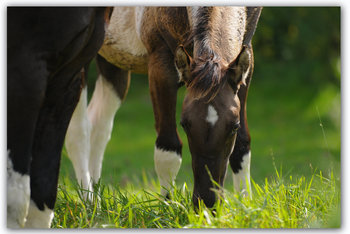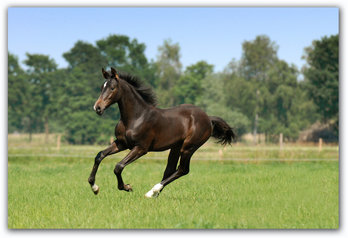Seeding a horse paddock
|
Seeding a horse pasture costs time and attention, but they will pay off in the form of excellent grassland that you will enjoy for many years. If you should be unable to seed your horse pasture yourself, ask your local agricultural contractor for help.
Agricultural contractors have the expertise and machinery needed to seed a beautiful horse pasture. It is important for your contractor to use grass seed that is specifically intended for horse pastures. If you haven’t yet bought any grass seed yourself, don’t forget to discuss this with your contractor. |
|
 |
Preparation |
|
Seeding
When
|
|
|
Should I add fertiliser?
|
 |

